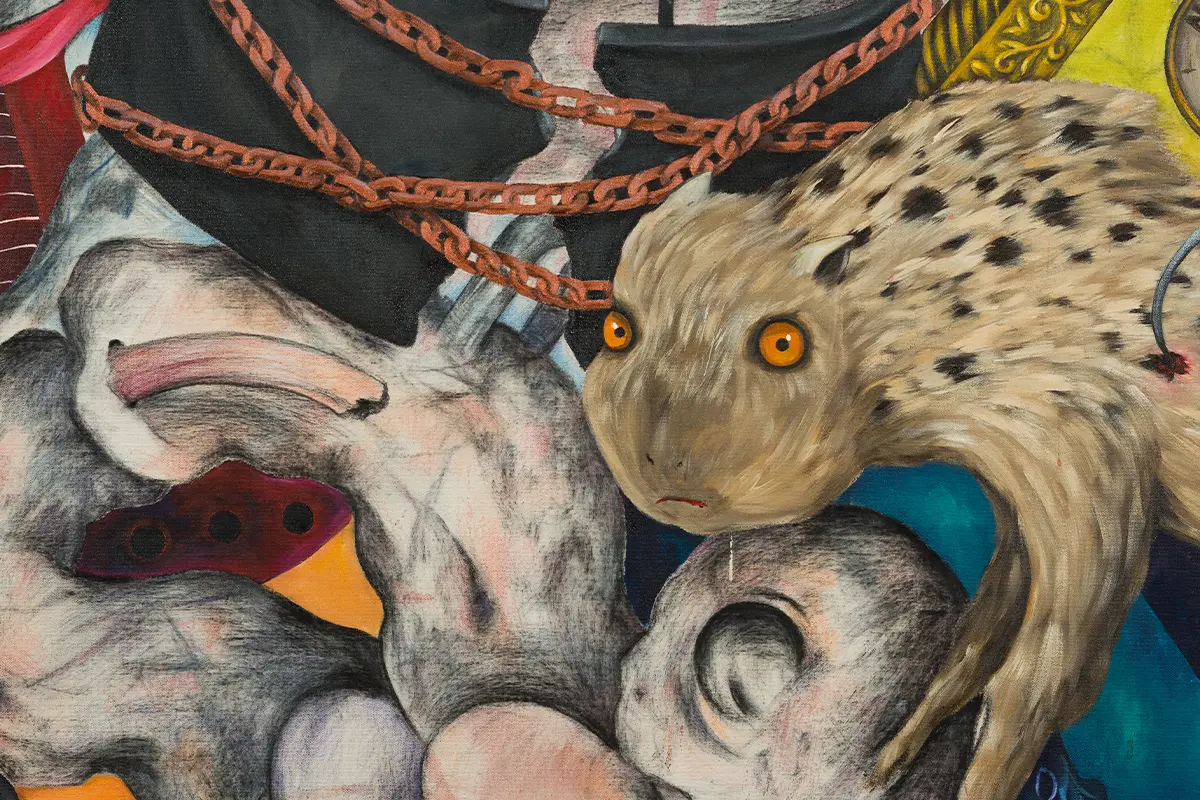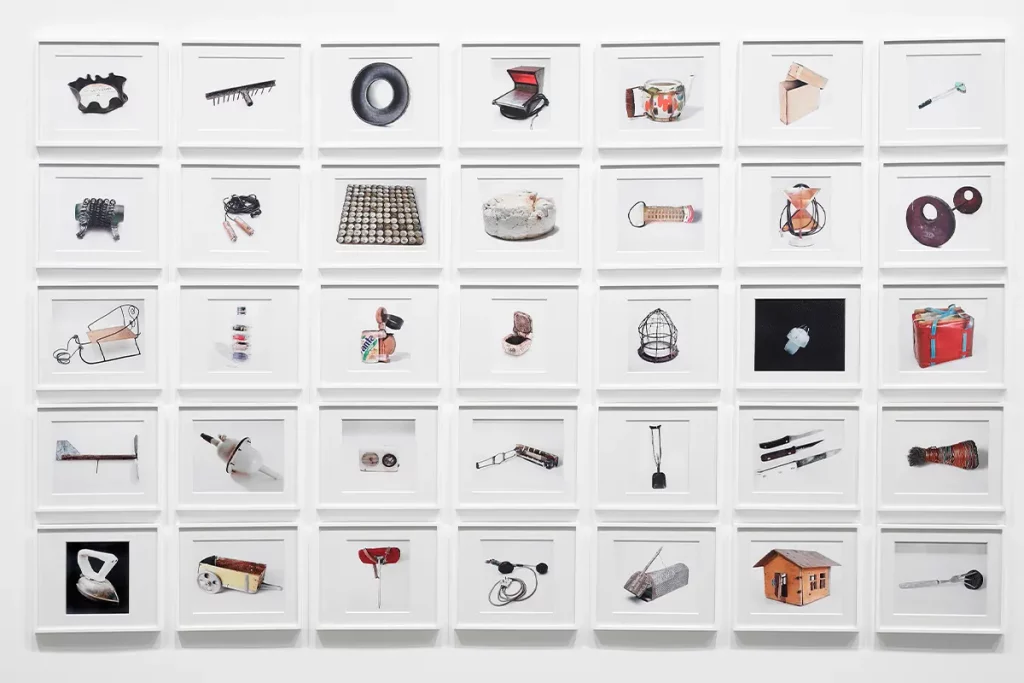From artworks by Robert Rauschenberg, Mario Merz, Michelangelo Pistoletto to Marina Abramović. De Angelis Testa donation to Ca’ Pesaro and how public and private can come together
In April at Ca’ Pesaro Gallery, Venice, a hundred and five artworks were donated to the city of Venice from the private collection of Gemma De Angelis Testa. The collection includes artworks by Robert Rauschenberg and Cy Twombly alongside Arte Povera masters Mario Merz, Michelangelo Pistoletto, Pier Paolo Calzolari, Gilberto Zorio, Thomas Ruff, Marina Abramović, among many others.
De Angelis Testa collection: exhibited
De Angelis Testa started collecting art in the Eighties. Armando Testa, worldwide famous designer and De Angelis’ spouse, was the one who introduced her to contemporary art. It was 1970 when he invited her to the Venice Art biennale: «In Venice» she told us, «I met my two great loves: Armando Testa and contemporary art». In 1983, she bought the first piece: «The Vengeance of Achilles» (1962) by American painter Cy Twombly.
The most-recently acquired among those exhibited at Ca’ Pesaro is Make it shine by Marinella Senatore, made in 2021. Senatore is one of the up-coming contemporary artists on the international scene. A demonstration of the keen and never-resting eye of the collector. De Angelis says she won’t stop now either: «once you start it is hard to stop».
Ca’ Pesaro: a collection of contemporary artists from all over the globe
The exhibition itself, on show at Ca’ Pesaro until September 17th 2023, is first of all an opportunity to witness a composite view of the world, what is going on in contemporary society, politics, history, seen through contemporary artists. The highest form contemporary art can achieve.
Walking through the rooms of the exhibition, what the visitor observes, hanging on the walls, is a complex picture of what modernity looks like. Or, as Museum director Elisabetta Barisoni puts it, the artworks on display «photograph the globalized society of our time, introducing voices from the five continents».
ACACIA in 2003: The meaning of the exhibition: promoting artists
She always worked to promote artists as well. With this aim, among other projects, she founded the association ACACIA in 2003, to bring together multiple private collectors, encouraging a new form of «collective patronage». Now she took it a step forward: De Angelis decided to donate her collection as she felt it was «time to give it a future».
Walking through the exhibition, made of twelve thought-through rooms, the viewer will feel like walking across the latter half of the XX century – watching time go by through the artist’s lens. According to the collector, «an ensemble of different and mighty works». As Barisoni points out, the collection will serve to «complement Ca’ Pesaro’s post 1950 collection».
Elective Affinities: the fil rouge
The exhibition is structured around twelve different sections. With one concept linking them all: Elective Affinities. As Goethe wrote in his famous Elective Affinities, «every attraction is reciprocal». Underlying this concept is the belief that attraction serves as a force to bring differences together, put them into dialogue. According to curator Gabriella Belli, the De Angelis Testa collection «finds its most intimate meaning in elective affinities», bringing together «thousands of different voices from all over the world».
The aim is creating a stimulating exchange among the works: «I always think of it as a conversation» says Belli, «when visitors leave, the day ends, lights are switched off and the artworks are left alone, the conversation must be appealing». The exhibition was designed and curated for «underscoring the continuous cross-reference of meaning that makes them dialogue with each other». Venice seems to be the perfect place for elective affinities: «with its thousand-year history of emancipation and peaceful coexistence» among different cultures and perspectives.
In conversation: hierarchy is abolished
The first piece the visitor encounters, is representative of the link between them all: Le affinità elettive, by Mario Airò. In the first section, named family portrait, after Le affinità elettive the visitor can experience a first conversation, between Ghada Amer (with White Drips on White) and Cy Twombly (with a Study for Vengeance of Achilles). The two works were made some thirty years apart, one in 1962 and one in 2003. They both seem to speak of relations and entanglement, making the whole thread connecting all 105 exhibited works immediately apparent.
On the opposite wall, Armando Testa in conversation with Gino de Dominicis. Some of the masterpieces by Armando Testa are also present, in dialogue with the whole exhibition: «advertising art, mixed with the works of other artists, declares the absence of a hierarchy between genres that characterizes the entire collection». No paucity of media either: pieces in the collection range from photography to painting, sculpture, digital art, video installation and performance art.
Painting and sculpture: opposite attraction
The following section is named after a line by Irish poet William Butler Yeats: «in dreams, begin responsibilities». Collecting and curating art means talking to the public, one needs to be aware of their voice. In the second room, a monumental work by British artist Tony Cragg: Rational Beings. The massive organic forms are inspired by the observation of «nature’s infinite combinations».
Natural and artificial alternate, with the lightness of carbon fiber challenging the viewers’ perception. In the same room, Grande scultura equestre nel paesaggio by Mario Schifano, a two-dimensional monument. Sculpture and painting, here in the large format, confront each other.
Nothing is as it seems: Messages from the world
The third and fourth rooms, though different at a first glance, have a lot in common. Section three, is a feast of colors, named after a line from another poet. This time, it is Italian, would-renowned Pirandello: «Nothing is as it seems». Indeed: the colorful paintings from this room are mostly from a generation of artists that «through painting, and through their love of colors, are sending out messages against wars and racism, and about equal rights and migration».
Opening the following section – titled Messages from the World – is Colorful Stones (2018) by Pascale Marthine Tayou. The work stands for this very concept: a jigsaw puzzle of colored granite stones, it points out that playfulness can be used to convey meaningful messages, in a way of doing art that is «no less committed to representing the complexity of contemporary society». With his art, Tayou investigates the recognition of his African origins.
Delicacy and strength: a dialogue through art and materials
The dialogue, contrasts and harmonies between delicacy, or the peril of breaking, and strength, or resistance. Section number six is titled after a line by Giuseppe Ungaretti: «I seek for an innocent country». Here the works concern a theme dear to all De Angelis Testa’s collection: «the last, the dispossessed, the ‘martyrs’ of migrations, but also men deprived of freedom and their rights’ ‘.
The play of fragility and strength is instantly apparent in a piece by Kendell Geers, Fingered (San Giminiano), 1999-2022. The artist underlines the «need to take a position with respect to the world he lives in”. A series of glass shelves display a variety of glasses, one beside the other. Stains and fingerprints of the people who used them (the people of San Gimignano) are still on them. Stains too. In the curator’s words, the work «speaks of social control through a metaphor»: the traces we leave behind, visible or otherwise, can never truly be erased. In the same room is Colored Vases by Ai Weiwei.
Male and female: two universes
The two following sections, titled «They smashed your beauty / and a skeleton of love remains» and «Narcissus vanished», are about women empowerment and the contemporary evolution of the male. Chantal Joffe, Vanessa Beecroft, Yang Fudong, Armando Testa, Sabrina Mezzaqui, Mariko Mori, Saint Claire Cemin, Francesco Vezzoli explore the role of the woman in contemporary society, through different gazes and media.
From painting, to photography, advertising, performance and sculpture. Artists from different continents with different perspectives, brought together by the keen eye of the collector. The male universe, «provides a counterpoint to the previous room». A sacred figure painted by Yan Pei-Ming faces a gigantic Portrait shot by Thomas Ruff.
Marina Abramović’s Balkan Baroque and Anselm Kiefer’s masterpieces
A photograph taken during a performance by Marina Abramović hangs in the middle of the wall, taking the visitor’s breath away. With Balkan Baroque, a four-days long performance during which the artist was sitting on top of a pile of animal bones trying to strip away the last bits of flesh, Abramović won the Golden Lion in 1996. A denunciation of the ethnic cleansing happening during the war in the Balkans, brought back to memory – as if from a distant dream – by the photograph. Art as a bold statement, one that is powerful and has consequences that can challenge power.
Further on in the exhibition, masterpieces by Anselm Kiefer seem to draw on the same line. Showing how the artist has a crucial role in society, in giving a voice and structure to political debate, expressing opinions with strength and building new ways to see the world. This is not just the state of the art either: it is a duty and a responsibility. As artist and singer Nina Simone once said, «an artist’s duty is to reflect the times».
Public and private: the role of the collector
If the role of artists is to create new narratives, the collector gathers different voices to organize a thought-out discourse. Meaning their view of the world inevitably adds up to those of the works they acquire. The duty of the collector should be moving in the same direction. A notion De Angelis Testa seems to always be keeping in mind as she purchases art. Which is what made the collection so significant.
De Angelis Testa donation
The De Angelis Testa donation also provides an opportunity to discuss the relationship between private and public sectors when it comes to displaying, promoting, and protecting arts and culture. The two are too often considered as two different and irreconcilable entities. This donation is proof of the opposite: when private collecting and public cultural institutions come together with the common goal of sharing knowledge and culture, magic synergies are born.
Gemma de Angelis Testa
Collector, president and founder of the Acacia Association.
CA’ PESARO
International Gallery of Modern Art, in Venice, houses a collection of nineteen and twentieth century paintings and sculptures




















